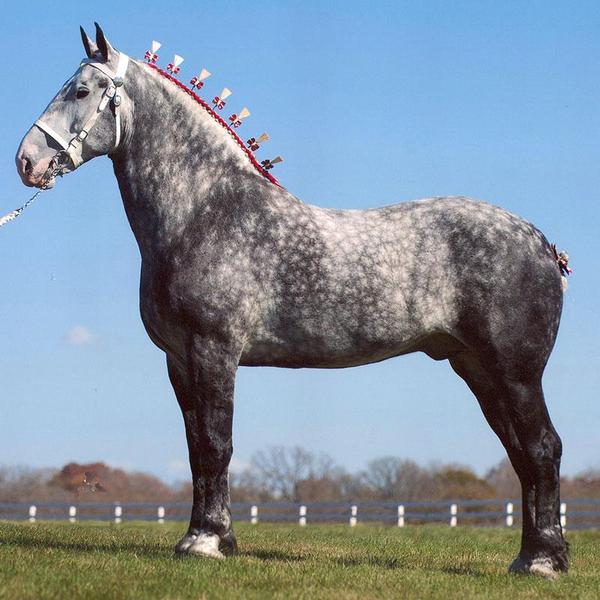Horse Halters
The halter is the first piece of tack most horses ever wear and usually the only piece they still wear after they are retired to the pasture. Halters are important because they can help horse owners control their animals in any number of situations. All halters basically have the same style. However, you can find halters in a range of prices, from budget friendly nylon to the more expensive leather models.
Since halters are used so frequently, you should have at least two of them. This way, if a halter breaks or if your horse manages to remove his halter, you will be able to use your backup halter. Since most horses have a similar head size, you shouldnít have a problem finding a halter to fit your horse. This is especially easy because a halter is designed to fit a horse more loosely than a bridle would. However, if the halter is practically falling off your horse`s head, then you should look for a smaller size.
Many people leave a halter on their horses while they are romping in the pasture or standing in their stalls because it is easier to catch a horse when he is wearing his halter. However, using halters in this manner can be really dangerous. Your horse can snag his halter on a tree branch, a protruding wire or some other object and become stuck. In his panic, he could seriously injure himself or even break his neck. Because of this danger, you should never use a traditional halter on your horse if you will be leaving him unattended. Instead, look for a breakaway halter, which will literally break apart when your horse struggles to free himself.
One of the most popular halter materials for Western riders is the rope halter. Rope halters are flexible and many of them are completely adjustable. While most of the halters are fairly simple, you can find elaborately braided, beautifully designed models, as well.
Nylon halters are very popular with most English riders and quite a few Western riders, as well. These halters are easy to clean, fairly durable and attractive. Models with metal hardware wear very well. However, models with plastic hardware may occasionally have broken fasteners after heavy use. Of course, since these halters arenít prohibitively expensive, this doesnít stop them from being popular.
Leather halters are incredibly durable, but are prone to becoming a bit moldy if they get wet and arenít properly cleaned. Luckily, a bit of effort and some saddle soap can get that ugly looking halter back to its former appearance in no time. Most leather halters have metal hardware, which means that problems with broken fasteners are rare.
Finally, no tack room is complete without a lead rope to attach to the halter. You can find lead ropes in cotton, leather or nylon materials. However, no matter which lead rope you choose and no matter how comfortable the handle is, never wrap the rope around your hand. This is a great way to get a dislocated shoulder or broken hand, since you may not be able to untangle yourself and drop the rope in time if your horse bolts.

Since halters are used so frequently, you should have at least two of them. This way, if a halter breaks or if your horse manages to remove his halter, you will be able to use your backup halter. Since most horses have a similar head size, you shouldnít have a problem finding a halter to fit your horse. This is especially easy because a halter is designed to fit a horse more loosely than a bridle would. However, if the halter is practically falling off your horse`s head, then you should look for a smaller size.
Many people leave a halter on their horses while they are romping in the pasture or standing in their stalls because it is easier to catch a horse when he is wearing his halter. However, using halters in this manner can be really dangerous. Your horse can snag his halter on a tree branch, a protruding wire or some other object and become stuck. In his panic, he could seriously injure himself or even break his neck. Because of this danger, you should never use a traditional halter on your horse if you will be leaving him unattended. Instead, look for a breakaway halter, which will literally break apart when your horse struggles to free himself.
One of the most popular halter materials for Western riders is the rope halter. Rope halters are flexible and many of them are completely adjustable. While most of the halters are fairly simple, you can find elaborately braided, beautifully designed models, as well.
Nylon halters are very popular with most English riders and quite a few Western riders, as well. These halters are easy to clean, fairly durable and attractive. Models with metal hardware wear very well. However, models with plastic hardware may occasionally have broken fasteners after heavy use. Of course, since these halters arenít prohibitively expensive, this doesnít stop them from being popular.
Leather halters are incredibly durable, but are prone to becoming a bit moldy if they get wet and arenít properly cleaned. Luckily, a bit of effort and some saddle soap can get that ugly looking halter back to its former appearance in no time. Most leather halters have metal hardware, which means that problems with broken fasteners are rare.
Finally, no tack room is complete without a lead rope to attach to the halter. You can find lead ropes in cotton, leather or nylon materials. However, no matter which lead rope you choose and no matter how comfortable the handle is, never wrap the rope around your hand. This is a great way to get a dislocated shoulder or broken hand, since you may not be able to untangle yourself and drop the rope in time if your horse bolts.



























